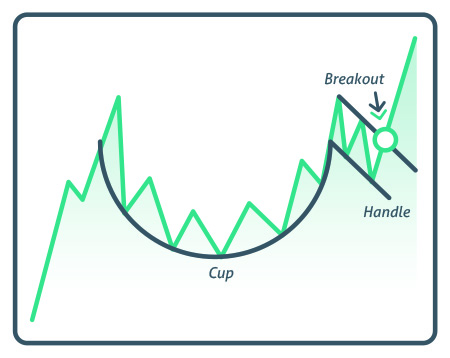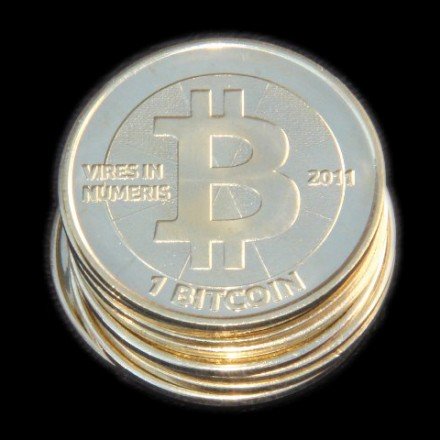Contents:


The 91 day t bill to the investors is the difference between the maturity value or the face value (that is Rs.100) and the issue price. The Reserve Bank of India conducts auctions usually every Wednesday to issue T-bills. The rational is that since their maturity is lower, it is more convenient to avoid intra period interest payments. Treasury billsare money market instruments issued by the Government of India as a promissory note with guaranteed repayment at a later date. Funds collected through such tools are typically used to meet short term requirements of the government, hence, to reduce the overall fiscal deficit of a country. Till recently, investment in G-Sec bonds/T-bills was restricted to banks and large financial institutions with a minimum ticket size of 5 Cr.
Egyptian T-bill sales surge in wake of currency depreciation – Al Arabiya English
Egyptian T-bill sales surge in wake of currency depreciation.
Posted: Sun, 15 Jan 2023 08:00:00 GMT [source]
So the auction process is basically a process to discover the price you’d pay for the bond, also called the weighted average price of the bond. You need to remember that t-bills are issued at a discount to par, and upon maturity, you get the Par value. Of course, you can get a little technical and measure the yield of this investment if you want. Treasury bills are short-term government securities with a maturity period of less than one year issued by the central government of India. T-bills are promissory noted that the government issues to meet its short-term borrowing needs, which are then repaid at a later date. Fusion Mediawould like to remind you that the data contained in this website is not necessarily real-time nor accurate.
The cut-off yield on the 91-day T-bill is estimated to be higher than the expected level of around 7.15-7.20 per cent.
During times of economic boom leading to high and persistent inflation rates in the country, high-valuetreasury billsare issued to the public, which, thereby, reduces aggregate money supply in an economy. It effectively curbs the surging demand rates, and in turn, high prices hurting the poorer sections of the society. When the government is going to the financial market to raise money, it can do it by issuing two types of debt instruments – treasury bills and government bonds. Treasury bills are issued when the government need money for a shorter period while bonds are issued when it need debt for more than say five years.

T-bills are issued at a discount to their true value and upon expiry, its redeemed at its true value. Zerodha founder and CEO Nitin Kamath also spoke in favour of T-bills on Monday suggesting that they are better than a bank fixed deposit at current rates. “At current rates, T-bills & G-secs are much better than a bank FD.
Features of Treasury Bills
T-bills are short-term, zero coupon debt instruments issued by government. The RBI had auctioned ₹9,000 crore of the 91-day T-bill, ₹16,000 crore of the 182-day T-bill, and ₹14,000 crore of the 364-day T-bill on Wednesday. After 91 days, you will get back Rs.100 and therefore you make a return of Rs.3. Think of it, this is as good as buying a stock at Rs.97 and selling it after 91 days at Rs.100.
Therefore, this compensation may impact how, where and in what order products appear within listing categories, except where prohibited by law for our mortgage, home equity and other home lending products. While we strive to provide a wide range offers, Bankrate does not include information about every financial or credit product or service. There are three T-bills variants, and they vary based on the maturity period.
Also, such G-secs can be resold in the secondary market, thereby allowing individuals to convert their holding into cash during emergencies. Hence, a treasury bill is one of the most secure forms of investment available in the country. These sovereign bills play a crucial role in regulating the total money supply in an economy, which, in turn, influences funds pooled into the capital market.
Government treasury billsare an ideal tool to invest in for individuals looking to park surplus funds in a secure investment tool to enjoy substantial yields. Also, as details regarding the discount rate and par value are published beforehand, individuals enjoy full transparency in the investment process. It also aids in the process of financial planning for robust wealth accumulation. The Reserve Bank of India also issues suchtreasury billsunder its open market operations strategy to regulate its inflation level and spending/borrowing habits of individuals.
Now, after a few years, you no longer wish to hold this bond. In such an event, you can decide to sell this bond in the secondary market, pretty much like how you buy and sell stocks on NSE. The loan which the government intends to repay within a year is called the Treasury Bills or T-bills. Loans which the Government intends to repay over many years are called the Bonds.
The Reserve Bank of India, on Wednesday, rejected all bids received for the 91-day Treasury bill (T-bill) for the first time since February 2016. Interbank Rate in India is expected to be 7.48 percent by the end of this quarter, according to Trading Economics global macro models and analysts expectations. In the long-term, the India 3-Month MIBOR is projected to trend around 7.23 percent in 2024, according to our econometric models.
Rates of Treasury bills, bonds to climb on Fed hike expectations – BusinessWorld Online
Rates of Treasury bills, bonds to climb on Fed hike expectations.
Posted: Mon, 09 Jan 2023 08:00:00 GMT [source]
Interbank Rate in India averaged 7.18 percent from 1998 until 2023, reaching an all time high of 12.27 percent in October of 2008 and a record low of 3.63 percent in December of 2020. This page provides – India Treasury Bill Yield – actual values, historical data, forecast, chart, statistics, economic calendar and news. India 3-Month MIBOR – values, historical data and charts – was last updated on May of 2023. Treasury billsare one of the most popular short-term government schemes issued by the RBI and are backed by the central government. Such tools act as a liability to the Indian government as they need to be repaid within the stipulated date. Suppose i invested 10,000 then how it is calculated for 91 days and how much money will get into my trading account after 91 days.
Who Should Consider Investing in Treasury Bills?
Bids which are higher than the cut-off yield are rejected. The Reserve Bank of India provides data for the 91 Day, 182 Day and 365 day T-Bills. These are auction rates and we data-bank the implicit yield at cut-off price. This is the yield on an instrument if it is held to maturity. There are three T-bills variants and they vary based on the maturity period. T-bills do not carry an interest component, in fact, this is one of the biggest difference between T-bills and Bonds.
Therefore, in addition to civil interaction, we expect commenters to offer their opinions succinctly and thoughtfully, but not so repeatedly that others are annoyed or offended. If we receive complaints about individuals who take over a thread or forum, we reserve the right to ban them from the site, without recourse. You will get 100 minus the allotment price after 91 days. If annualized percentage is 6.93% for 91 days as given on coin website. Sujeet, this is interesting, we will take the opinion from a tax consultant for this.
- Both are great investments if you seek the safety of your capital.
- The interest income gets clubbed to your other income and you are taxed accordingly.
- The return to the investors is the difference between the maturity value or the face value (that is Rs.100) and the issue price.
- Likewise, the Government of India also needs money to build roads, bridges, dams, hospitals, etc.
- If you were to invest in this bond, you would receive a 7.4% interest every year until its maturity in 2035.
The YTM calculation assumes that you reinvest the interest payment back into a similar bond, which further generates interest on interest. Bond traders and institutional investors only look at YTM because this is the true comparable value between two different bonds. This T-bill is issued to you at a discount to its par value, Say Rs.97.
At the time of placing your order, you pay a slightly higher amount. Once all the orders are placed, the auction process starts and RBI evaluates the weighted average price. Any difference between the ‘amount payable’ and ‘weighted average price’, is credited back to your account the very next day. The concept of ‘Yield to Maturity’ or YTM is a little tricky.
Just so you know, the government had in 1997 also issued 14-day immediate treasury bills. Treasury bills are usually held by financial institutions including banks. They have a very important role in the financial market beyond investment instruments. Banks give treasury bills to the RBI to get money under repo.
The return to the investors is the difference between the maturity value or the face value and the issue price (for calculation of yield on Treasury Bills please see answer to question no. 26). Bankrate.com is an independent, advertising-supported publisher and comparison service. We are compensated in exchange for placement of sponsored products and, services, or by you clicking on certain links posted on our site.
- A yield based auction is generally conducted when a new Government security is issued.
- It is considered as income from other sources and taxes have to be paid as per the income tax slab.
- When they run short of money, they approach their bank for a loan, which is the RBI.
The data can be viewed in daily, weekly or monthly time intervals. At the bottom of the table you’ll find the data summary for the selected range of dates. Also, If we invest /buy at Rs 95 and hold till maturity, we will get Rs 100. Then this is the maturity amount which we are guaranteed to get.
The Rupee and the Reserve: Why can’t the RBI explicitly support the rupee?
You are investing in Bonds/T-bills issued by the Government of India. Since the Government of India backs these, these are virtually risk-free investments. The guarantee from the Government is also called ‘Sovereign Guarantee’. These were products which were available only to banks and the large financial institution, but now we can invest in them and take advantage of attractive and guaranteed returns.
When they run short of money, they approach their bank for a loan, which is the RBI. The RBI, in turn, auctions the loan in the form of bonds/T-bills that you can purchase. Essentially, you are lending a part of the overall loan the government is seeking. Against this loan, the Government of India, promises to pay periodic interest and also repay the principal at the end of the tenure.
While investors can also look at putting their money in bank fixed deposits, but it must be noted that treasury bills come with the added advantage of being open for sale in the secondary market . If an FD investor wishes to liquidate it before maturity, the bank could levy charges. It disincentives individuals into channelling their resources in this sector, thereby boosting cash flows to the stock markets instead, ensuring a boost in the productivity of most companies. Such a rise in productivity has a positive impact on the GDP and aggregate demand levels in an economy.
When there is fear in EQ markets, the bond markets tend to perform quite well. The actual bonds are yet to be listed, and NSE says they will be listed by August this year and I guess the trading symbol will be known around the same time. These securities are issued for limited amounts, and there is no guarantee of allotment if the number of bids received is higher than the issue size. However, if you fail to get an allotment, you can try again next week. CRAR prudential normreleased by RBI the risk accompanied with SDLs is weighted as zero.
For the first time, T-bills were issued 1917 via auctions conducted by the Reserve Bank of India at regular intervals. Anyone including individuals, trusts, institutions and banks can purchase T-Bills. But they are usually held by financial institutions as they possess a greater importance in the financial market. Lenders give treasury bills to the RBI to get money under repo. Treasury billsare auctioned by the RBI every week through non-competitive bidding, thereby allowing retail and small-scale investors to partake in such bids without having to quote the yield rate or price.
